Bad (Michael Jackson song) is one of Michael Jackson’s most iconic singles, released by Epic Records on September 7, 1987. It served as the second single from his seventh studio album, also titled Bad, which Jackson released at the peak of his career following the monumental success of Thriller. Bad was not just an album but a statement, with Jackson asserting his continued relevance and innovation in the music industry. The album promised to showcase Jackson’s growth as an artist and his ability to push the boundaries of pop music.
The song “Bad” was written and composed by Jackson himself and produced in collaboration with the legendary Quincy Jones. Its creation was influenced by a real-life story that Jackson had read about, involving a young man striving to escape poverty by attending private school, only to meet a tragic fate when he returned to his old neighborhood. This narrative backbone of the song allowed Jackson to explore themes of identity, resilience, and confrontation, which resonated deeply with his audience.
With “Bad,” Jackson aimed to shift his image—once the wholesome, young frontman of The Jackson 5—towards a more complex, edgy persona. This evolution was pivotal, reflecting not only his artistic ambitions but also his response to the changing dynamics of pop music and celebrity culture during the late 1980s. The release of “Bad” marked a significant moment in Jackson’s career, reinforcing his status as a trailblazer in the music industry and setting the stage for the next phase of his extraordinary legacy.
| Detail | Description |
|---|---|
| Release Date | September 7, 1987 |
| Album | Bad |
| Role in Career | Released at the peak of his career following Thriller, asserting his continued relevance and innovation |
| Songwriter | Michael Jackson |
| Producer | Quincy Jones |
| Inspiration | Inspired by a real-life story about a young man from a troubled neighborhood |
| Themes | Identity, resilience, and confrontation |
| Image Evolution | Shift from a wholesome image to a more complex, edgy persona |
| Impact | Reinforced Jackson’s status as a trailblazer in the music industry |
Contents
Background and Inspiration
“Bad” emerged from a period when Michael Jackson was keen on solidifying his status as a musical innovator and cultural icon. Written and composed by Jackson, the song’s genesis was deeply influenced by his reading of a poignant true story. This narrative, which Jackson found either in Time or Newsweek, told of a young man from a tough neighborhood who had been afforded the opportunity to attend a private school. Despite his efforts to escape a life of poverty, he was tragically killed by his own friends out of jealousy when he returned home for Thanksgiving break. The story of this young man’s attempt to better himself, only to be pulled back by the very environment he tried to leave, struck a chord with Jackson, fueling the song’s emotional core.
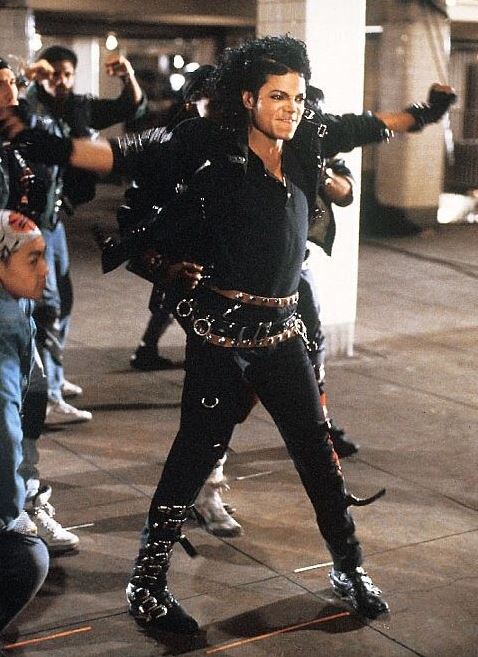
Jackson initially envisioned “Bad” as a musical duel between himself and another pop superstar, Prince. The collaboration was intended to be a friendly competition reflective of the song’s confrontational style. However, the collaboration famously fell through when Prince objected to the opening line of the song, “Your butt is mine.” In an interview, Prince humorously remarked on the ambiguity of who would sing that line to whom, highlighting a fundamental disagreement over the song’s approach. As a result, Jackson proceeded to record the song solo, which arguably allowed for a more personalized expression of its themes.
| Aspect | Details |
|---|---|
| Background | Period of aiming to cement status as a musical innovator and cultural icon. |
| Inspiration | Inspired by a story in Time or Newsweek about a young man from a tough neighborhood, who despite attending a private school to escape poverty, was killed by his friends out of jealousy. |
| Themes | Confrontation, resilience, and the tragic pull of one’s original environment. |
| Intended Collaboration | Initially intended as a duet with Prince, envisioned as a musical duel reflecting the song’s confrontational style. |
| Reason for Solo Recording | Collaboration with Prince fell through due to disagreement over the line “Your butt is mine,” leading Jackson to record solo. |
| Impact of Solo Recording | Allowed for a more personalized expression of the song’s themes. |
Composition and Technical Aspects
Musically, “Bad” is a compelling blend of funk, pop, and rock elements, all driven by a complex rhythmic structure. The song is set in the key of B♭ minor and maintains a tempo of 114 beats per minute, which aligns it with the energetic feel of much of Jackson’s work. Jackson’s vocal arrangement spans from A♭3 to B♭5, showcasing his wide range and ability to convey intensity and vulnerability within the same track. The main bassline of “Bad” is rooted in the pentatonic blues scale, contributing to its gritty, confrontational feel.
The composition of “Bad” features a notable progression similar to the classic song “Hit the Road Jack,” which further emphasizes its assertive message. The song’s intro, with its chromatic four-note brass sequence, nods to James Brown’s “It’s a Man’s Man’s Man’s World,” a subtle homage to one of Jackson’s musical influences. These elements underscore the song’s theme of defiance and self-assurance.
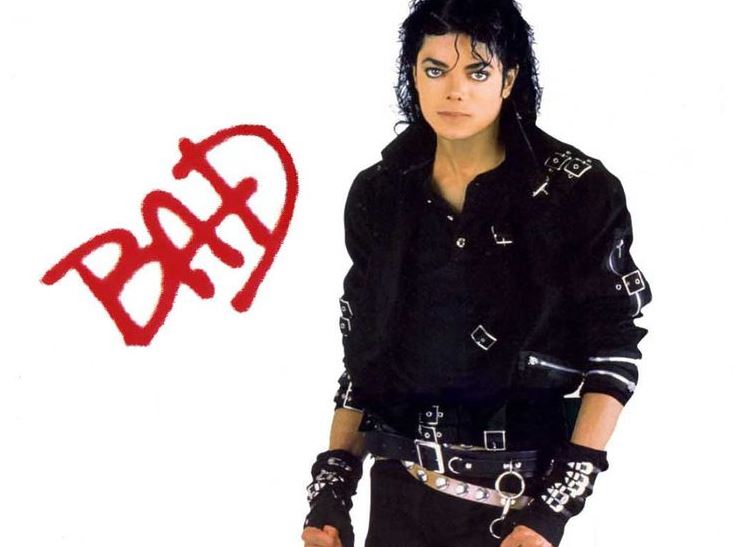
Lyrically, “Bad” is rich with assertions of self-confidence and confrontations with societal expectations. The repetitive questioning—”Who’s bad?”—serves not just as a rhetorical challenge to the listener but also as a self-affirmation. This lyrical motif is in line with the song’s overall narrative of fighting back against perceived limitations or criticisms. The aggressive tone of the lyrics complements the song’s musical energy, creating a powerful statement about strength and resilience.
The song’s aggressive and confident tone is further amplified by its dynamic production. Co-produced by Quincy Jones, the track features a layered sound that combines electronic instruments with traditional rock orchestration, creating a sound that was both contemporary and timeless. The use of synthesizers and drum machines gives the track a polished, modern feel, while the live instrumentation adds a level of depth and intensity that helps convey the song’s emotional weight.
In sum, “Bad” stands out as a prime example of Michael Jackson’s artistic evolution. Its inspired origins, combined with its sophisticated musical composition, allowed Jackson to explore themes of identity, resistance, and empowerment, leaving a lasting impact on his career and pop culture at large.
| Element | Details |
|---|---|
| Genre | Funk, pop, and rock blend with a complex rhythmic structure. |
| Key and Tempo | Set in B♭ minor with a tempo of 114 beats per minute. |
| Vocal Range | Spanning from A♭3 to B♭5, showcasing Jackson’s wide range and emotive capability. |
| Bassline | Rooted in the pentatonic blues scale, adding a gritty, confrontational feel. |
| Musical Comparisons | Progression similar to “Hit the Road Jack” and intro nod to James Brown’s “It’s a Man’s Man’s Man’s World.” |
| Lyrics | Rich with assertions of self-confidence and confrontation with societal expectations, featuring the refrain “Who’s bad?” |
| Production | Co-produced by Quincy Jones, featuring a mix of electronic and traditional rock instrumentation, synthesizers, and drum machines. |
| Impact | Empowered Jackson’s themes of identity, resistance, and empowerment, impacting his career and pop culture. |
Critical Reception
Upon its release, “Bad” was met with widespread acclaim from music critics, who lauded Michael Jackson’s innovative approach and the song’s bold, assertive energy. Critics noted that “Bad” marked a significant departure from the more wholesome image Jackson had cultivated earlier in his career. This transformation was seen as a deliberate attempt by Jackson to cultivate a more edgy persona, something that resonated well with the evolving music scene of the late 1980s.
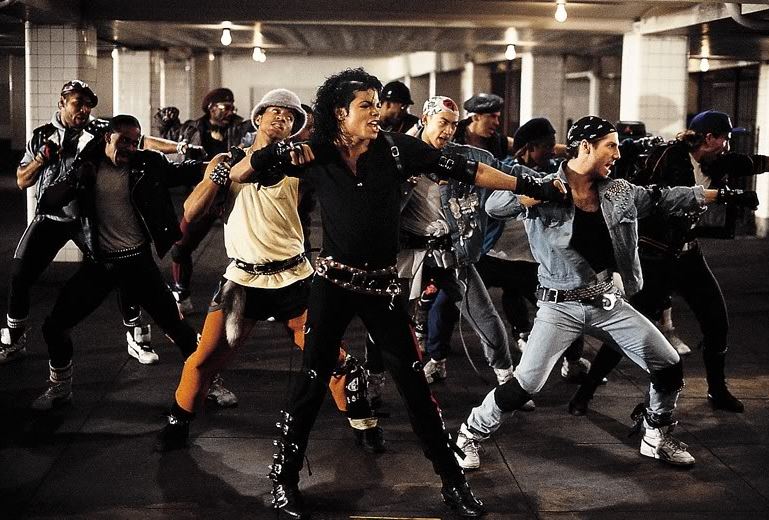
Davitt Sigerson from Rolling Stone magazine was particularly effusive, praising the song for its vigorous assertiveness and Jackson’s delivery, which he described as a blend of confidence and vulnerability. Sigerson highlighted that the track needed no defense, as its quality was evident, seamlessly blending pop sensibilities with a rockier edge. Stephen Thomas Erlewine of AllMusic echoed this sentiment, listing “Bad” among the top picks from the album. He praised Jackson’s vocal performance, which he likened to “the love child of James Brown and Mavis Staples,” indicating a blend of soulful depth and fiery intensity that defined Jackson’s vocal evolution.
Jennifer Clay of Yahoo Music remarked on the song’s ability to reshape Jackson’s image, noting that while the tougher image might have been a bit difficult to swallow at first, it ultimately worked to the song’s advantage, enhancing its impact and helping to cement Jackson’s position as a pop powerhouse.
| Critic | Source | Comment |
|---|---|---|
| Davitt Sigerson | Rolling Stone | Praised the song for its vigorous assertiveness and Jackson’s confident, yet vulnerable delivery. Described the track as seamlessly blending pop sensibilities with a rockier edge. |
| Stephen Thomas Erlewine | AllMusic | Listed “Bad” among the top picks from the album, praising Jackson’s vocal performance as a blend of James Brown’s intensity and Mavis Staples’ soulful depth. |
| Jennifer Clay | Yahoo Music | Commented on the song’s role in reshaping Jackson’s image, noting the tougher image was initially challenging but ultimately enhanced the song’s impact and cemented Jackson’s status as a pop powerhouse. |
| General Reception | Various | Received widespread acclaim for its innovative approach and bold, assertive energy. Marked a significant departure from Jackson’s earlier, more wholesome image. |
Chart Performance
“Bad” enjoyed massive commercial success, further solidifying Michael Jackson’s status as a pop icon. The song reached number one on the Billboard Hot 100, where it remained for two weeks, becoming the album’s second number-one single. This achievement marked Jackson’s eighth number one entry on the chart, underscoring his enduring appeal and dominance in the music industry.
Internationally, the song was equally successful. It charted at number one in several countries, including Ireland, Norway, Spain, and the Netherlands, and reached the top ten in many others, such as Canada, Australia, New Zealand, and throughout Europe. These chart performances were not just indicative of Jackson’s global star power but also of his ability to resonate across diverse cultural contexts.
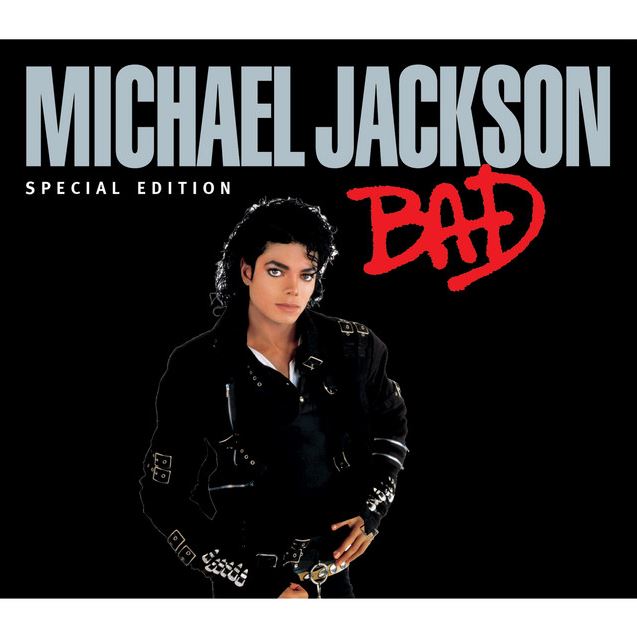
The song’s success was not limited to radio play and record sales; it also performed exceptionally well on various dance charts, reflecting its broad appeal across different musical tastes and preferences. “Bad” reached the top of the Billboard Hot R&B Singles, Hot Dance Club Play, and Rhythmic charts, showcasing its crossover appeal and danceability.
| Metric | Details |
|---|---|
| US Billboard Hot 100 | Reached number one, remained for two weeks; the album’s second number-one single and Jackson’s eighth chart-topper. |
| International Success | Number one in Ireland, Norway, Spain, and the Netherlands; top ten in Canada, Australia, New Zealand, and throughout Europe. |
| Dance Charts | Topped the Billboard Hot R&B Singles, Hot Dance Club Play, and Rhythmic charts, reflecting its broad appeal and danceability. |
| Overall Impact | Massive commercial success that solidified Michael Jackson’s status as a pop icon and demonstrated his global appeal across diverse cultural contexts. |
Certifications and Sales Achievements
The Recording Industry Association of America (RIAA) certified “Bad” Platinum, a testament to its widespread sales in the United States. Similarly, the track received various certifications across the globe, including Platinum in the United Kingdom and multiple Gold and Platinum certifications in other territories, reflecting significant sales numbers that helped drive the commercial success of the album.
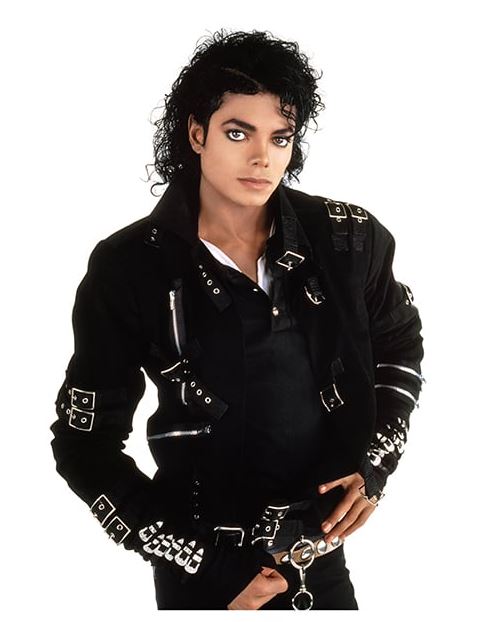
These certifications are crucial indicators of the song’s enduring popularity and commercial viability, affirming its status as one of the key singles that helped drive the success of the Bad album. This album not only succeeded commercially but also became a critical piece of Michael Jackson’s discography, noted for its bold artistic vision and its reflection of Jackson’s growth as a songwriter and performer.
Overall, “Bad” was a commercial juggernaut and a critical darling, highlighting Michael Jackson’s ability to adapt and thrive in the ever-evolving world of pop music. Its success helped pave the way for subsequent singles from the album and reinforced Jackson’s reputation as an innovator and a leader in the music industry.
| Certification | Region | Details |
|---|---|---|
| Platinum | United States | Certified by the Recording Industry Association of America (RIAA), affirming widespread sales. |
| Platinum | United Kingdom | Reflects significant sales in the UK. |
| Gold/Platinum | Various International Territories | Multiple certifications across the globe, indicating strong international sales and popularity. |
| Album Impact | Global | Crucial to the success of the ‘Bad’ album, which is noted for its bold artistic vision and marks a significant phase in Jackson’s career as a songwriter and performer. |
| Overall Achievement | Global | Commercial juggernaut and critical darling, pivotal in reinforcing Jackson’s reputation as an innovator and leader in the music industry. |
Music Video
The music video for “Bad” is an elaborate production that mirrors the song’s themes of confrontation and transformation. Directed by the renowned filmmaker Martin Scorsese and written by novelist Richard Price, the video features Michael Jackson in a dramatic narrative that extends the song’s storyline. Filmed at the Hoyt–Schermerhorn Streets subway station in Brooklyn, New York, the video adds a gritty, urban backdrop to the song’s edgy lyrics.
In the video, Jackson portrays Darryl, a student returning from an upscale private school to his tough neighborhood, where he confronts his past and the expectations of his peers. The video is notable for its extended dance sequences, which showcase Jackson’s signature choreography and physical storytelling. The integration of street-style with balletic movements creates a visual representation of the song’s exploration of identity and self-assertion.
The “Bad” video was praised for its cinematic quality and its ambitious scope, receiving numerous accolades. It was a pivotal piece in Jackson’s career, serving not just as a music video but as a short film that elevated the art form. The video won Favorite Single – Soul/R&B at the American Music Awards and contributed significantly to the song’s impact, reinforcing Jackson’s image as a pioneering artist in music video production.
| Aspect | Details |
|---|---|
| Director | Martin Scorsese |
| Writer | Richard Price |
| Location | Hoyt–Schermerhorn Streets subway station, Brooklyn, New York |
| Character | Michael Jackson as Darryl, a student confronting his past and peer expectations after returning from private school |
| Choreography | Extended dance sequences showcasing Jackson’s signature choreography and physical storytelling, blending street-style with balletic movements |
| Themes | Confrontation, transformation, identity, and self-assertion |
| Accolades | Received numerous accolades, including Favorite Single – Soul/R&B at the American Music Awards |
| Impact | Elevated the music video to a short film level, reinforcing Jackson’s pioneering status in music video production |
Cultural Impact and Legacy
“Bad” has left an indelible mark on music and popular culture, its influence permeating various aspects of entertainment and beyond. The song and its accompanying video played a crucial role in solidifying Michael Jackson’s status as a global pop icon. By boldly declaring “I’m bad,” Jackson communicated a message of self-confidence and resilience that resonated with audiences worldwide, echoing through generations.
The cultural impact of “Bad” extended to fashion and dance, with Jackson’s attire in the video – the black leather jacket adorned with buckles and zippers – becoming iconic. This look was emulated by fans and fashion designers alike, influencing trends and becoming synonymous with 1980s pop culture. Moreover, the choreography of “Bad,” which included complex dance sequences and the innovative use of street and dance theater elements, set new standards for artists. The video’s dance routines continue to be studied and referenced by choreographers and dancers, emphasizing Jackson’s role as a pioneer in integrating dance into music videos.
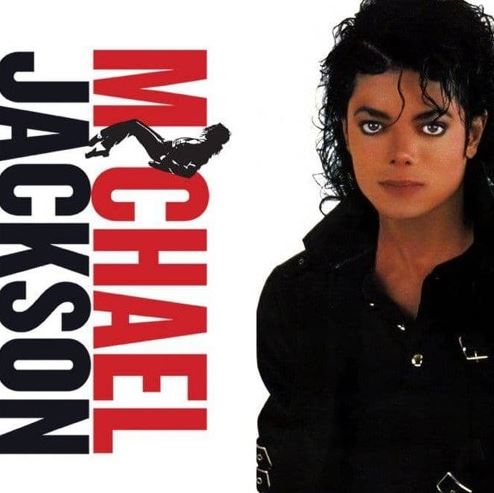
The song also had a significant impact on the music industry, influencing the development of music video as a critical component of an artist’s creative expression and marketing. “Bad” demonstrated how music videos could be used to tell a story, enhance a song’s emotional depth, and connect with audiences in a visually compelling way. This approach has been adopted by countless artists in the decades since, who see the music video as an essential element of artistic storytelling.
Furthermore, “Bad” contributed to the dialogue around social issues, using its narrative to explore themes of poverty, education, and inner-city life. It prompted discussions about the challenges faced by those trying to change their lives in the face of societal and peer pressures, making it a song that not only entertained but also provoked thought and dialogue.
In conclusion, “Bad” is not just a song or a music video; it is a cultural phenomenon that encapsulates the essence of Michael Jackson’s artistry. Its impact on music, dance, fashion, and video production continues to be felt, ensuring its place in the annals of pop culture history. Jackson’s ability to blend sharp musical hooks with compelling narratives and groundbreaking visuals in “Bad” helped to redefine what was possible in the pop genre, leaving a legacy that artists strive to emulate today.
| Aspect | Impact |
|---|---|
| Global Icon Status | Solidified Michael Jackson’s status as a global pop icon, communicating self-confidence and resilience. |
| Fashion Influence | Influenced 1980s fashion with Jackson’s black leather jacket style, inspiring fans and fashion designers. |
| Dance Influence | Set new standards in choreography, influencing artists and dancers with its complex sequences and street dance elements. |
| Music Video Evolution | Advanced the music video format by demonstrating its potential for storytelling, emotional depth, and audience engagement. |
| Social Commentary | Explored themes of poverty, education, and inner-city life, prompting discussions on societal challenges and personal transformation. |
| Legacy in Pop Culture | Continues to influence music, dance, fashion, and video production; regarded as a cultural phenomenon that redefined pop music possibilities. |
Live Performances and Covers
Michael Jackson’s live performances of “Bad” were as electrifying as the song itself, each rendition bringing a new layer of intensity and spectacle to the track. The song was a staple in Jackson’s setlists during his world tours, including the extensive Bad World Tour (1987-1989) and the first leg of the Dangerous World Tour. During these performances, Jackson’s dynamic stage presence and meticulous choreography brought the song’s confrontational lyrics to life, captivating audiences worldwide. A standout performance at Wembley Stadium in 1988 was later released on DVD, allowing fans to relive the magic of Jackson’s live artistry.
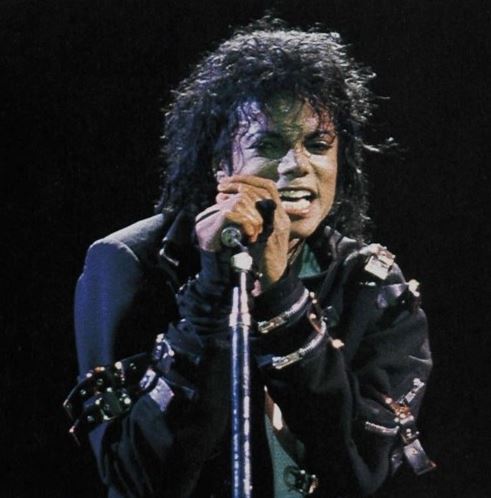
“Bad” has also been widely covered and parodied, underscoring its broad appeal and cultural impact. Perhaps the most famous parody came from “Weird Al” Yankovic, who transformed the song into “Fat,” a humorous take on consumer culture and excess. Yankovic’s version not only received Jackson’s blessing but also utilized the same subway set from the original music video, adding an authentic touch to the spoof. Additionally, the song was covered by the likes of Billie Eilish and her brother Finneas O’Connell in 2018 for Triple J’s Like a Version, showcasing “Bad” through a hauntingly minimalist and contemporary lens. This cover highlighted the song’s versatility and its ability to resonate across different musical styles and generations.
| Aspect | Details |
|---|---|
| Live Performances | Featured in Jackson’s world tours including the Bad World Tour (1987-1989) and Dangerous World Tour. Notable for its intensity and spectacle, with a standout DVD release of the 1988 Wembley Stadium performance. |
| Parodies | “Weird Al” Yankovic’s “Fat” is a famous parody that received Jackson’s blessing and used the same subway set as the original music video. |
| Covers | Billie Eilish and Finneas O’Connell covered “Bad” in 2018 for Triple J’s Like a Version, presenting a hauntingly minimalist and contemporary interpretation. |
| Cultural Impact | Both parodies and covers highlight the song’s broad appeal and versatility, demonstrating its enduring influence across different musical styles and generations. |
“Bad” remains one of Michael Jackson’s most influential and memorable songs, a pivotal track in his career that helped to cement his status as a pop legend. Released in the prime of his career, “Bad” was more than just a follow-up to the monumental success of Thriller; it was a bold declaration of artistic independence and a showcase of Jackson’s ability to evolve his sound and persona. The song’s aggressive tone and confrontational lyrics helped to transform Jackson’s image from the boy-next-door to a more complex, edgy artist capable of addressing deeper social issues.
The enduring legacy of “Bad” is evident not only in its continued popularity on various media platforms but also in its influence on subsequent generations of artists. Musicians and performers cite “Bad” as an inspiration for its innovative use of music video as a narrative tool, its integration of complex dance choreography into pop performances, and its fearless approach to songwriting and production.
Reflecting on the song’s message of self-assertion and resilience, “Bad” remains relevant today as it was in the 1980s. Its themes of personal strength and defiance against societal pressures continue to resonate, offering a message of empowerment and self-confidence that transcends time. In an era where individuality and authenticity are celebrated, “Bad” serves as a powerful reminder of the importance of staying true to oneself in the face of adversity.
Ultimately, “Bad” exemplifies Michael Jackson’s genius not just as a performer but as a visionary who could craft compelling, multifaceted art that challenges, entertains, and inspires. Its place in music history as a catalyst for change and an emblem of the fusion of music and visual storytelling is securely cemented, ensuring that “Bad” will continue to be celebrated for decades to come.

